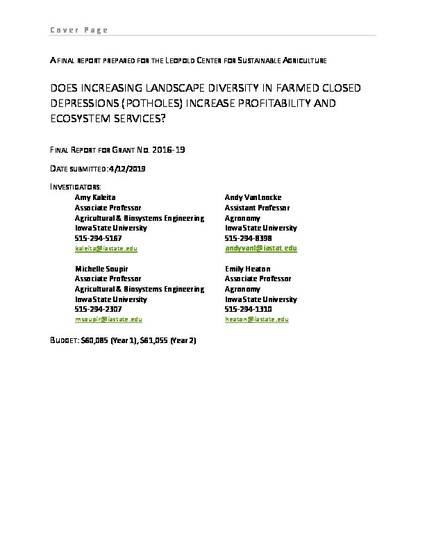
The goal of this project was to stimulate farmer consideration of “retiring” farmed potholes into land cover that both improves water quality and saves money. This was accomplished by measuring key pothole and plant production metrics, modeling pothole hydrology, plant productivity and profitability under alternative management (farmed vs. perennial cover), and informing stakeholders with outreach partners. Instrumentation and data collection for the 2016-18 seasons was completed at seven potholes, six of which are in conventionally farmed fields, the seventh is in the Conservation Reserve Program. Primary data collection was: depth of ponded water versus time (hourly) for mid-May through late October; water quality samples on days with sufficient ponding to collect a sample; and periodic measurements of crop canopy (leaf area index) and biomass (destructive samples). These data were used both to understand the behavior of these features with respect to hydrology and water quality, and to parameterize and assess the performance of hydrology and crop growth models. Stakeholder outreach allowed us to share our findings with a variety of audiences including farmers/producers and extension specialists.
Available at: http://works.bepress.com/amy_kaleita/77/
